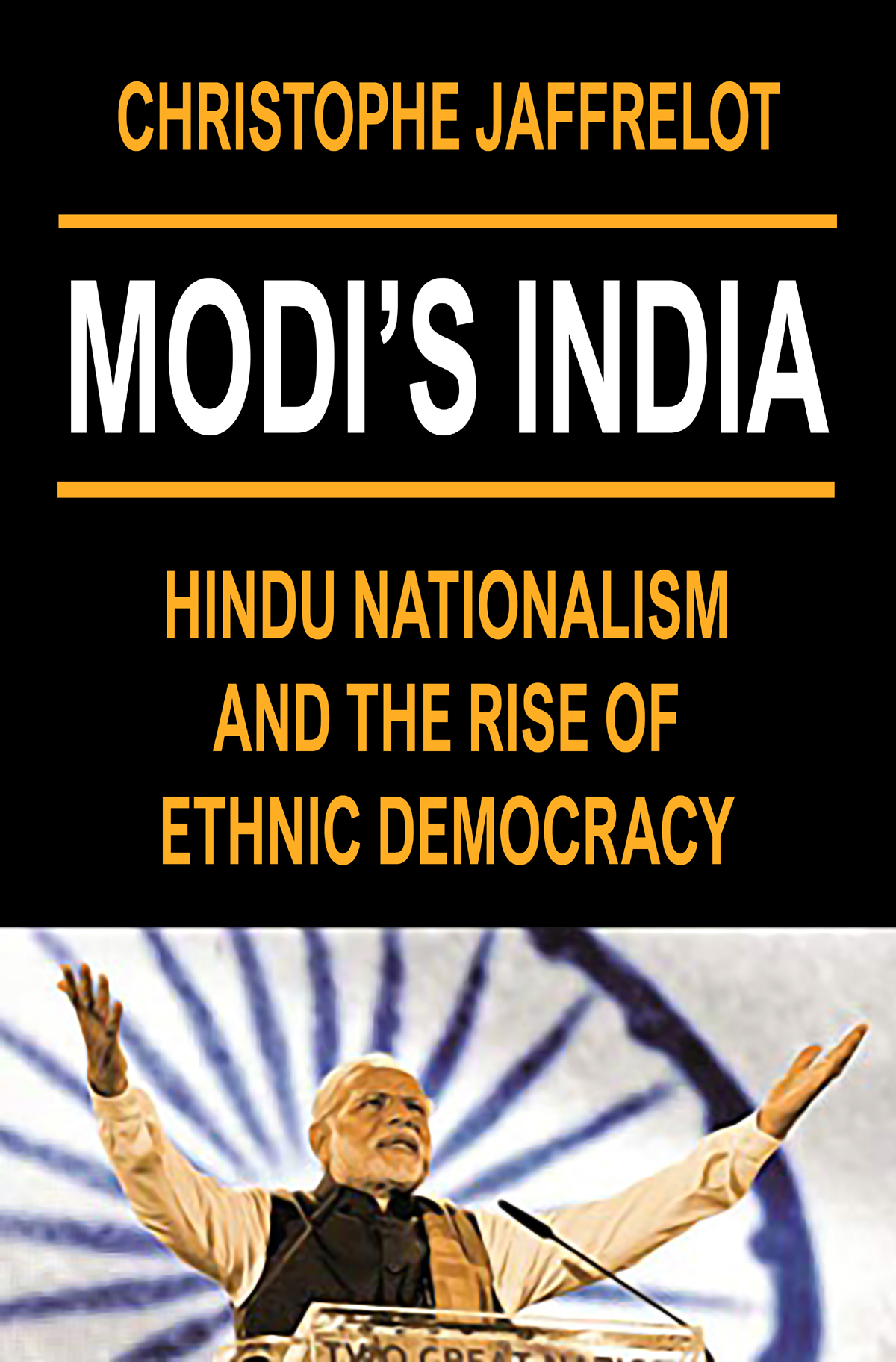Book Review
By Rubia Shoukat
Modi’s India: Hindu Nationalism and the Rise of Ethnic Democracy, by Christophe Jaffrelot, comprises three sections: (i) The Hindu Nationalist Power Quest: Hindutva and Populism; (ii) The World’s Largest De Facto Ethnic Democracy; and (iii) The Indian Version of Competitive Authoritarianism. Jaffrelot explains Modi’s political rise in this book by examining a combination of political, social and historical factors that have promoted Hindu ideology in Indian politics. According to the author India’s democratic origins can be traced to three different eras since independence: (i) A conservative to progressive democracy until 1970s; (ii) Progressive democracy following 1971 elections; and (iii) Imposition of emergency in 1980s (p. 1). Contemporary Indian politics of BJP challenge upper castes’ political power and strengthen the voices of lower and backward Hindu classes (p. 5).
Jafferlot emphasizes that leadership is an integral component in evolving societies. He stresses that some leaders have the ability to appeal to the masses. This is evident in India’s case as Modi’s right-wing populism has garnered strong public support due to his middle-class background and self-made personality. The first section of the book recounts the emergence of Hindutva ideology, how Rashtriya Swayamsevak Sangh (RSS) entered Indian politics and how Modi’s political career evolved from his early days as an avid RSS supporter. Hindu nationalism was largely a reaction to the pan-Islamic inclinations of India’s Muslims (p. 12).
To defend Hindus and to ensure their domination over India, RSS was established to unite Hindus and eliminate caste and sectarian divisions that Hindu nationalists have always viewed as a weakness vis a vis Muslims, whom they believe to be strongly united (p.15). This is where Modi, being an ultra-nationalist Hindu leader supported by right-wing Hindu extermists, challenged the liberal democratic norms (p. 34), doing away with Nehruvian secularism. Modi organized a series of processions in 2000s.The objective was to attract attention of marginalized Hindus by supporting their demand for justice for Hindu victims of the Hindu-Muslim riots of 1985, despite the fact that most casualities were among Muslims (p. 36).
Modi initiated three schemes in order to please poor Hindus: (i) Swachh Bharat Abhiyan (Clean India Mission), launched in 2014 to eliminate open defecation and improve solid waste management; (ii) Jan-Dhan Yojana (People’s Wealth Scheme), launched in 2014 to expand access to financial services such as bank accounts, remittances, credit, insurance and pensions; and (iii) Ujjwala Yojana (Brightness Scheme), launched in 2016 to distribute 50 million LPG connections among women living Below Poverty Line (BPL). A budget of INR 80 billion (USD 1.0 billion) was allocated for this scheme (p. 113). In the second section, the book discusses Modi’s role as Prime Minister of India. The author highlights how he promoted Hindu supremacy through RSS and gradually turned India into an ‘ethnic democracy’ from a ‘secular democracy’ (p. 157). New slogans were introduced by BJP that aimed at promoting the term Bharat instead of India (p. 163). The influence of ethnic democracy is evident as today Christian and Muslim minorities are viewed as a threat and are target of violence by Hindu nationalists (p. 188). Many Churches have been vandalized and clerics attacked. Christians have been stigmatized and repressed.
The situation for Muslims is even worse (p. 194). A Hindu youth group known as Hindu Yuva Vahini (HYV) contends that Hindustan should be free from Muslims (p. 241). Systematic targeting of Muslims is taking place as part of cow protection movement. A shift in mindset of the armed forces is also visible as they exclude Muslims from recruitment process in the army (p. 425- 426). In the last section, the author explains how India has transformed from an open and democratic state to an authoritarian state. This is evident as minorities have been excluded from participation in politics and government jobs including judiciary and bureaucracy. In addition, journalists, intellectuals and artists have also been attacked physically as well as virtually by BJP followers (p. 253).
Arun Jaitley, former Indian law minister and a lawyer has observed that “step by step, brick by brick, the edifice of India’s legislature is being destroyed” (p. 307). The undermining of the electoral process in India is being termed as “electoral authoritarianism” (p. 327). Media is considered to be the fourth pillar of democracy. However, in India, it has lost its voice and purpose (p. 315). Electronic media channels have doubled the air time for Modi in comparison to the air time for leaders of other political parties. (p. 350). Modi government purposely targeted autonomous status of Jammu and Kashmir (p. 377) and justified the abrogation of Article 370 on the pretext of promoting national integration and development (p. 379). Journalists were not given access to the areas where protests took place in response to this amendment. However those who managed to reach there reported that shots had been fired at the local Kashmiris resulting in fatalities (p. 381).
Jaffrelot concludes that Prime Minister Modi has introduced a new dimension to Indian politics in the form of creating a de facto Hindu state. It was, in fact, a case of populism. Not only did Modi manage to manipulate a substantial number of lower-caste Hindus but also was able to project himself as the protector of Hindus against minorities. The book largely presents an objective and well-structured analysis. However, there are some inconsistencies and factual errors that need to be highlighted. For instance, according to the author, during the Balakot incident one Indian aircraft was shot down by Pakistan Air Force (PAF) instead of two. The author also incorrectly blames Pakistan for the Pulwama incident without any supporting evidence. (p. 330). It has been Pakistan’s position right from the beginning that Pulwama was a false flag operation which has been vindicated by recent statement of Satya Pal Malik, the so-called former Governor of Indian Illegally Occupied Jammu and Kashmir (IIOJK).
Rubia Shoukat is Research Officer at (CISSS).


